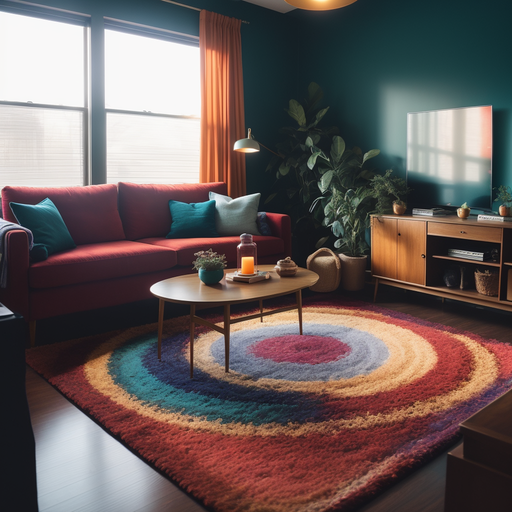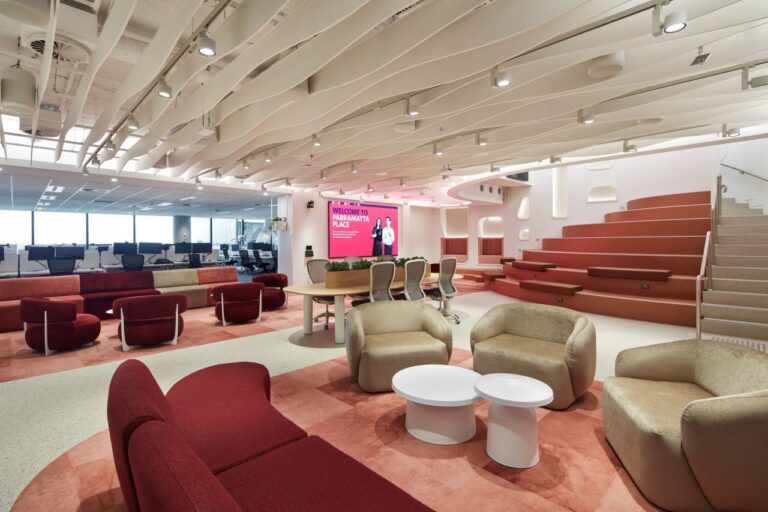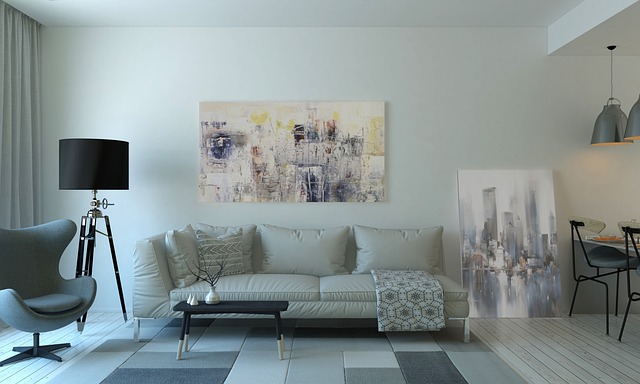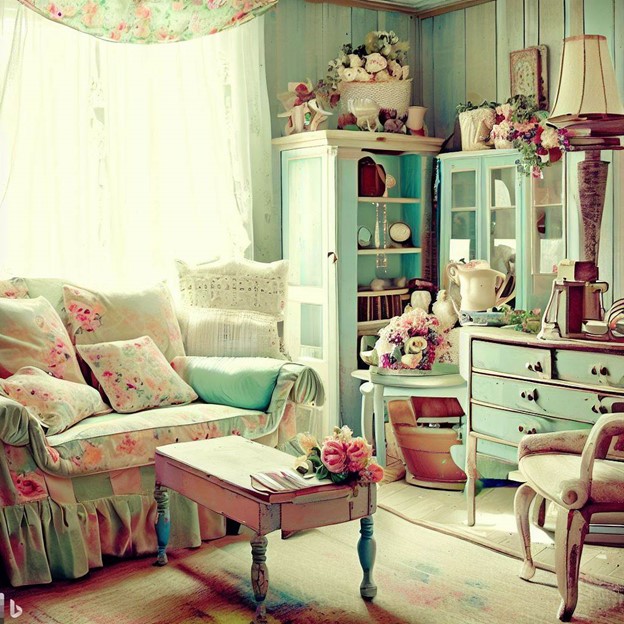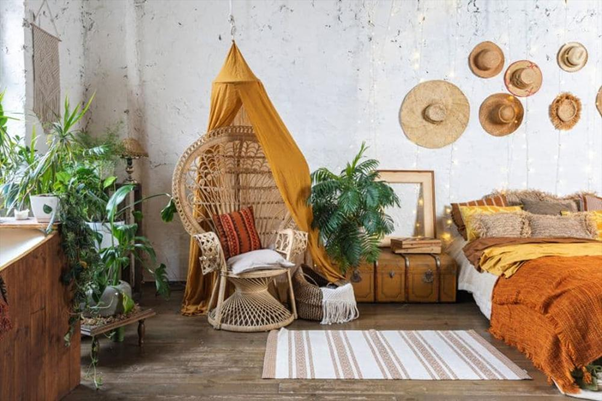From periods so back in history like the XVI Century, under the kingdom of Louis XIV, French Architecture and Interior Design became a major icon for almost every society in the world, symbolizing elegance, refinement, and skillful craftsmanship. Through the years, some people consolidated some of their principles in what is called “The 7 French Interior Design Rules”. Let’s take a look at them, and how can help us to create the place we dream of.

Rule 1: Balance Old and New.
This principle means that you should consider the original character and style of the space you are decorating and avoid adding anything that clashes with it. For example, if you are working on a classic Haussmannian apartment in Paris, which has elaborate ceiling moldings and parquet floors, you should not add recessed lighting or modern furniture that would ruin the elegance of the space. Instead, you should choose pieces that complement and enhance the historical features of the space, such as dramatic floor lamps or vintage accessories. You should respect the history of the space by using materials, shapes, and colors that reflect its original spirit and function.
Rule 2: Focus on Architectural Details
Architectural details are important elements of interior design that can enhance the appearance and function of a space. Moldings, cornices, ceiling medallions, and arches, all are beautiful tools to create a special place. Some of the benefits of focusing on architectural details are:
Add character and charm to a space by reflecting its history and style.
Create visual interest and drama by adding texture, shape, and dimension to a space.
Define and separate different areas or functions within a space by creating transitions and boundaries.
Highlight or emphasize certain elements or focal points in a space by framing or surrounding them.
Improve the comfort and quality of a space by affecting the acoustics, lighting, ventilation, and temperature.
Rule 3: Invest In Quality Furniture
Some of the most classic furniture styles were created in the French school, like Louis XV Style or Art Deco, so is natural for the French style to consider quality furniture as a central element. There are great benefits of quality furniture for all spaces.
Greater durability. Quality furniture is built to last and can withstand wear and tear better than cheap furniture. This means you don’t have to replace it as often and can save money in the long run.
More comfort. Quality furniture is designed to provide comfort and support for your body and posture. It can also improve your mood and well-being by creating a cozy and inviting space.
More style. Quality furniture can enhance the appearance and character of your space by adding elegance, charm, and personality. It can also reflect your taste and style and make a good impression on your guests.
More value. Quality furniture can retain its value over time and even increase in value if it is rare or antique. It can also be passed on as a heirloom or sold for a good price if you decide to change it. Click the link for more info on how to get more value for your money! This time with the bellini sofa: https://www.thededicatedhouse.com/bellini-sofas-the-appeal-of-replicas-and-timeless-elegance/
More sustainability. Quality furniture is made with eco-friendly materials and processes that reduce waste and pollution. It can also be recycled or reused for other purposes if it is no longer needed.
Creativity. Quality furniture can inspire you to be more creative and expressive with your space. You can mix and match different pieces, add accessories, or experiment with different layouts to create a unique and personal space.
Rule 4. Use a Refined Color Palette
Using a refined color palette is an essential aspect of the French style of interior design. Some of the reasons for this are:
A sense of elegance and sophistication in a space. It can also enhance the natural light and make the space feel more spacious and airy.
Provides a versatile and timeless backdrop for other elements of the French style, such as architectural details, vintage furniture, and colorful accessories.
A refined color palette reflects the rustic charm and simplicity of the French countryside, where the style originated. It can also create a contrast with the urban chic and sophistication of the French cities.
Rule 05. Embrace Ornate Details and Accessories.
Decorative accents like mirrors, chandeliers or artwork play an important role in French modern design.
Decorative accents add personality and charm to a space. They can also reflect the owner’s taste and style and make a space feel more cozy and inviting.
Actually, decorative accents create visual interest and drama in a space. They can also add texture, shape, and dimension to a space and draw attention to certain areas or focal points. They can also add contrast and color to a space and complement the neutral and solid hues of the French style.
Rule 06. Incorporate Luxurious Fabrics.
Luxury fabrics play an important role in the world of modern French design. Luxury fabrics add elegance and sophistication to a space. They can also enhance the comfort and quality of a space by providing softness, warmth, and texture.
A Matter Of Tradition
Luxury fabrics reflect the tradition and culture of French design. They can also showcase the craftsmanship and innovation of French fabric makers by using exquisite materials, patterns, and techniques.
Luxury fabrics can also express the owner’s taste and style by using vibrant colors, floral motifs, or geometric shapes. Some examples of luxury fabrics used in modern French design are:
Silk. A smooth and shiny fabric that can be used for curtains, upholstery, or bedding. It can also feature prints or embroideries that add visual interest and elegance.
Velvet. A plush and soft fabric that can be used for sofas, chairs, or cushions. It can also create contrast and drama with its rich colors and light-reflecting properties.
Linen. A natural and breathable fabric that can be used for tablecloths, napkins, or curtains. It can also create a sense of simplicity and rusticity with its crisp texture and neutral tones.
Rule 07: Creating a Sense of Effortlessness
Don’t try too hard and keep it simple. Avoid clutter and excess and choose a few key pieces that reflect your personality and style, and you will project a relaxed, cozy environment. There are several benefits of a relaxed, human-friendly space. How to get it nicely?
Mix vintage with new and create awkward juxtapositions. Combine different styles and periods of furniture and accessories to create a unique and eclectic look that is not too matchy-matchy.
Use natural light and white walls to create a spacious and airy feel. Opt for sheer curtains or blinds that let the light in and paint your walls a bright white or a soft pastel color.
Add some pops of color and pattern to contrast the neutral tones. Use art, rugs, pillows, or vases to bring some vibrancy and interest to your space. You can also use floral motifs or geometric shapes to add texture and dimension.
Follow your heart and don’t be afraid to try new things or experiment with artistic expression. Use your personal memories and treasures to shape your space and make it feel cozy and inviting.
